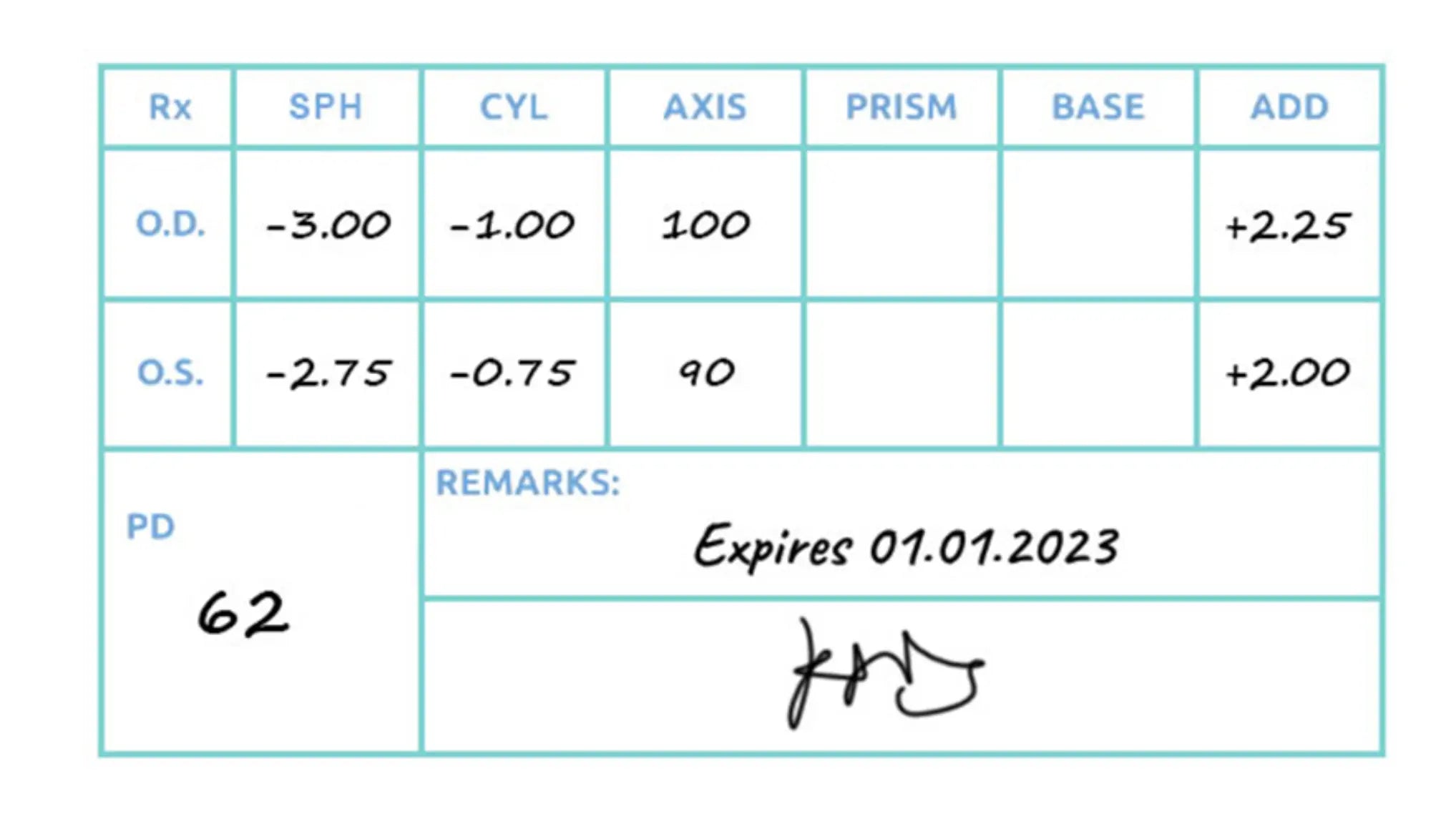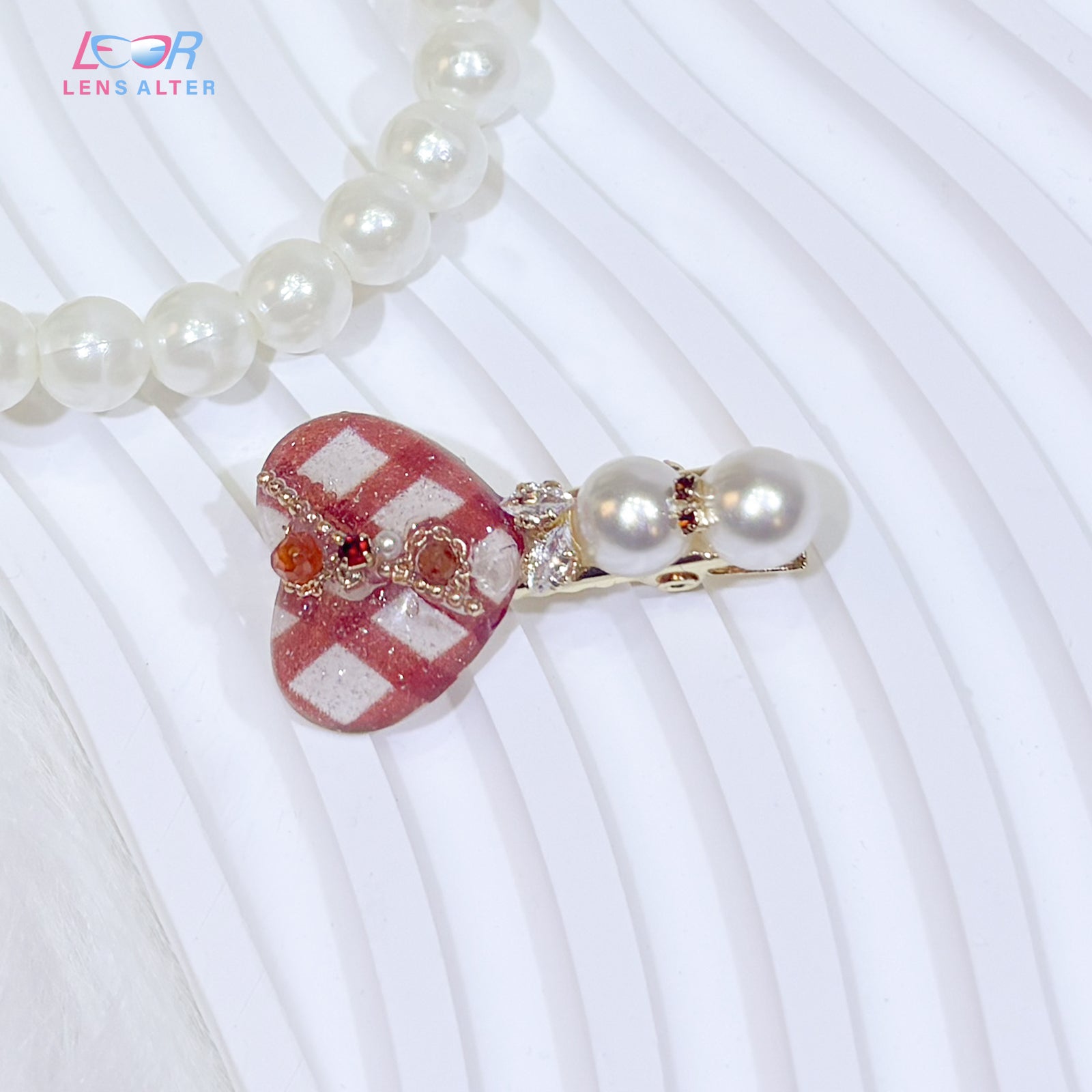
How to read prescription?
Your Prescription (RX) is what an ophthalmologist (an MD) or optometrist (a doctor of optometry) provides to correct your vision with a pair of eyeglasses with corrective lenses.
THE FOLLOWING FORM IS A BRIEF PRESCRIPTION SAMPLE MEANT TO HELP YOU UNDERSTAND YOUR OPTICAL PRESCRIPTION.
- OD: Refers to "oculus dexter" or right eye. OS refers to "oculus sinister"or left eye.
- SPH: Sphere or Spherical, refers to the refractive correction in the prescription. Minus/Negative(-)values are for nearsightedness, it means you have trouble seeing things faraway, and Plus/Positive(+) values are for farsightedness, it means you have trouble seeing near. If "PL" or "Plano" is written for this value then you should select 0.00 for this field.
- CYL: Cylinder, refers to the strength of the correction for astigmatism. It can be either positive(+) or negative(-). A CYL value wil always have an Axis value. If "Ds" or "SPH" is noted in the CYL space in your prescription, it means you have no astigmatism in that eye. In that case, enter 0.00 for the CYL and Axis.
- Axis: Refers to the angle of the correction for the astigmatism (CYL) in the eye from 1 to 180 degrees. Remember, No CYL value, no Axis value. They must work together to
correct astigmatism. - ADD: Refers to additional plus magnification that is needed for reading such as in a progressive or bifocal lens. It is sometimes seen on your prescription as NV-ADD (Near Vision Addition). We display a single NV-ADD field since it is almost always the same value for both eyes.
- Prism: Is the prismatic power used to correct vision displacement, like double vision. If you do not have prism correction in your prescription, do not include prism values since it will negatively affect your vision. The Base Direction for prism is usualy written as BU(Base Up), BD(Base Down), BI(Base In), and BO(Base Out).

NOTE:
Sphere and cylinder power is always measured in diopters. These come in decimal form and are commonly written in quarter-diopter values. In contrast, the axis values are whole numbers from 1 to 180 and dictate a location. It's important to remember that a glasses prescription is not the same as a contact lens prescription so the two are not interchangeable.












